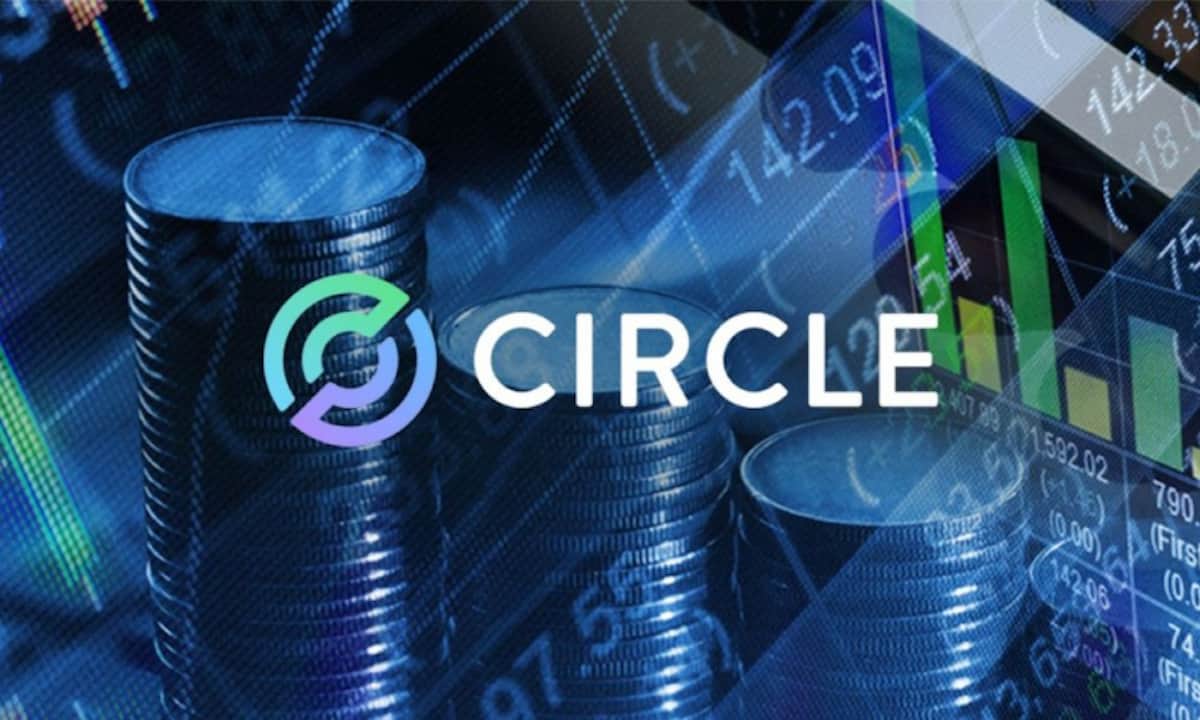Being regulated by state money transmission laws in the U.S. means Circle Internet Financial Ltd. does not have any right on the reserves backing USD Coin (USDC), chief financial officer Jeremy Fox-Geen told Forkast Editor-in-Chief Angie Lau in an exclusive interview.
“To us, FUD is just FUD,” Fox-Geen said, referring to the fear, uncertainty, and doubt tactics allegedly used by bad actors to snowball uncertainty over stablecoins into a bank run. “Much of it is not based on fact, it’s speculative,” he said.
Reserves backing USDC are held in segregated accounts with financial institutions, Fox-Geen said. Customers retain their rights over the funds in these accounts when they pay in U.S. dollars for USDC to be minted by Circle and deposited in their wallets, Fox-Geen explained.
“That segregation ensure[s] that the USDC reserve is complete and separate from anything else that Circle does,” Fox-Geen told Forkast. “A holder of USDC can always be confident that they can redeem it at any time, one for one for a U.S. dollar.”
“A holder of USDC can always be confident that they can redeem it at any time, one for one for a U.S. dollar.”
– Jeremy Fox-Geen, Circle
Read more: Three Arrows, Voyager failures raise questions of who is next in crypto fall from grace
His comments come as Twitter user @CryptoInsider23 alleged that Circle’s USDC stablecoin project was on the brink of collapse. “They’re at major risk on defaulting on USDC reserves,” the user alleged.
The allegations come amid the Terra-UST meltdown that wiped off billions in investor wealth. The resulting price drop in cryptocurrencies amid intertwined lendings and investments led to a wave of withdrawal freezes and bankruptcies in the industry as firms scrambled to stave off a run on the bank.
Three Arrows Capital filed for Chapter 15 bankruptcy to protect U.S. assets from foreign creditors while Voyager Digital filed for Chapter 11 bankruptcy in New York due to 3AC defaulting on a loan worth about US$680 million at current prices in USDC stablecoin and Bitcoin.
Meanwhile, since May 1, USDC’s market capitalization had risen by more than 12% to more than US$55 billion through late evening trade in Asia on July 8, according to CoinMarketCap data. In comparison, the market capitalization of Tether (USDT), the world’s top stablecoin, has dropped more than 20% to US$66 billion in the same period.
Circle pays Signature Bank and Silvergate Bank an annual interest of about 5% on stablecoin reserves held by the financial institutions, the Twitter user alleged.
The user accused the banks of reusing the reserves to mint more USDC to artificially inflate the stablecoin’s market capitalization. The converted USDC is then lent by Signature and Silvergate to “high-risk” customers such as Genesis, BlockFi, Celsius, Galaxy, Alameda and 3AC, @CryptoInsider23 alleged.
“The size of the hole among all lenders, exchanges and liquidity providers,” is estimated at between US$3 billion to US$5 billion, the Twitter user said without specifying a source. “You can see USDC and Signature are at risk of a Bank Run since lenders cannot return billions and billions of USDC!!”
“No, we don’t,” Fox-Geen said when asked if Circle indulged in any such scheme. “The concept is absurd, and the writer doesn’t really understand how banks work,” he added.
“The concept is absurd, and the writer doesn’t really understand how banks work.”
– Jeremy Fox-Geen, Circle
Circle’s Form S-4 filed with the U.S. Securities and Exchange Commission also do not show any such costs were incurred.
“So unlike a bank, unlike an exchange, unlike any unregulated institution, we cannot use the USDC reserve in any way,” Fox-Geen said. “We cannot lend it out. We cannot borrow against it, and we cannot use it to pay our bills.”
“There is also some obvious confusion between USDC reserves — which are regulated (where and what we can hold), examined (by regulators and assurance firms), and transparent (weekly flows and composition) — and USDC that itself is used in lending markets, away from Circle,” Jeremy Allaire, cofounder and chief executive officer of Circle said on his verified Twitter handle.
Read more: CFTC Commissioner Pham suggests regulators stay tech-neutral on stablecoins
USDC reserves are split roughly 75% in short-duration (of three months or less) Treasurys and about 25% in cash, as of July 1, according to Circle’s latest weekly reserves breakdown. The latest figures have not been verified by any independent third party auditor including Grant Thornton LLP, Circle said.
“Fundamentally, what that means is we have US$10 billion [to] US$15 billion of cash at hand to satisfy immediate demands,” Fox-Geen said. “And US Treasurys themselves are the most price stable liquid assets in the world,” he added.
“So our customers could redeem all of USDC in one day,” said Fox-Geen. “We could process those redemptions, and the only limits to the time that they would get their U.S. dollars back are the limits in the settlement systems of the fiat currency banking system itself.”
This would be possible even if Circle were to file for bankruptcy, Fox-Geen said. Under U.S. bankruptcy law, “the USDC reserve is shielded and afforded protections by those laws such that creditors of Circle cannot access the USDC reserve,” he added.

